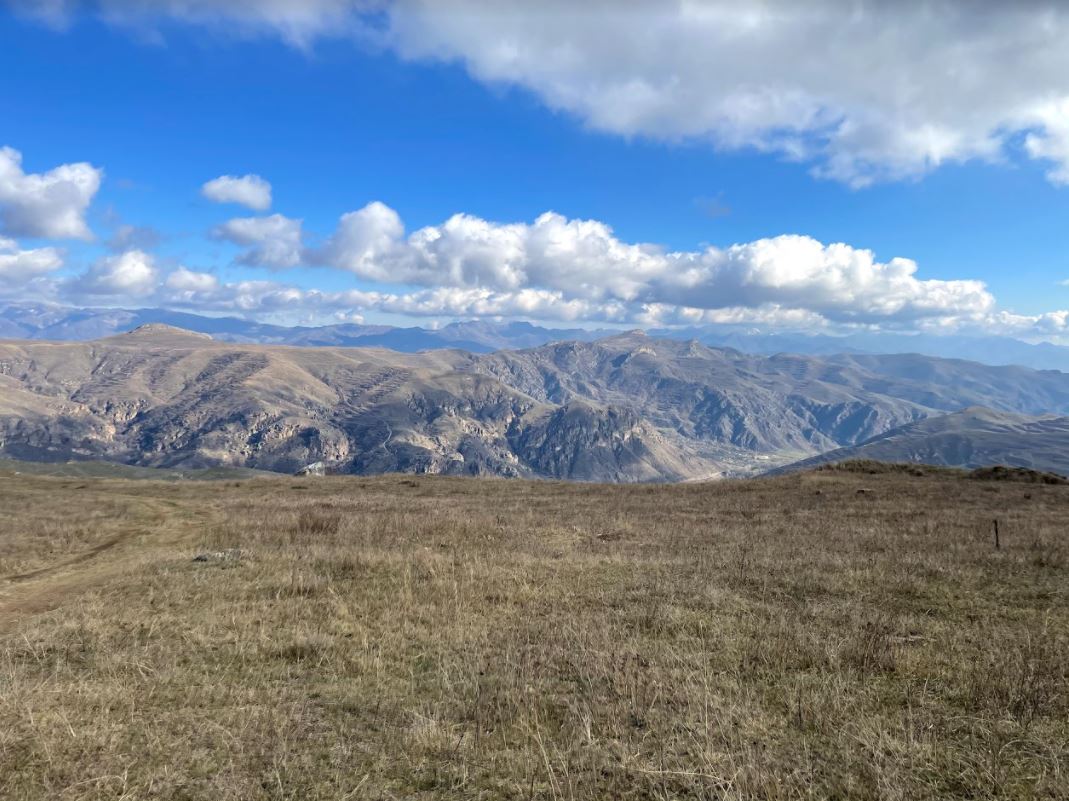
KASHATAGH/STEPANAKERT, Artsakh – Imagine having to hand deliver the key to an Armenian church from Kashatagh to the parish priest in Goris because you may have potentially been the last Armenian to visit before the region succumbed to Azerbaijan’s control.
This is the reality we’re facing as an Armenian nation right now. As part of the deal made on November 9, Aghdam was ceded on November 20, Karvachar on November 25 following a 10-day delay, and Kashatagh on December 1.
I was in Goris from November 27 to November 29. During this brief period, I was able to visit, explore and help document the region of Kashatagh one final time before its transfer to Azerbaijan.
Kashatagh is one of the seven provinces of Artsakh and is the largest province by area (3,376.60 sq. km.). The region’s capital is Berdzor, and according to the last count, its population was close to 10,000. The region bordered Armenia to the west and Iran to the south and was well-known for accepting close to 200 Syrian Armenian refugees following the Syrian Civil War.
On December 1, 2020, a majority of Kashatagh was transferred to Azerbaijan with the exception of the Lachin Corridor. The handover contained Berdzor, Sus and Aghavno.
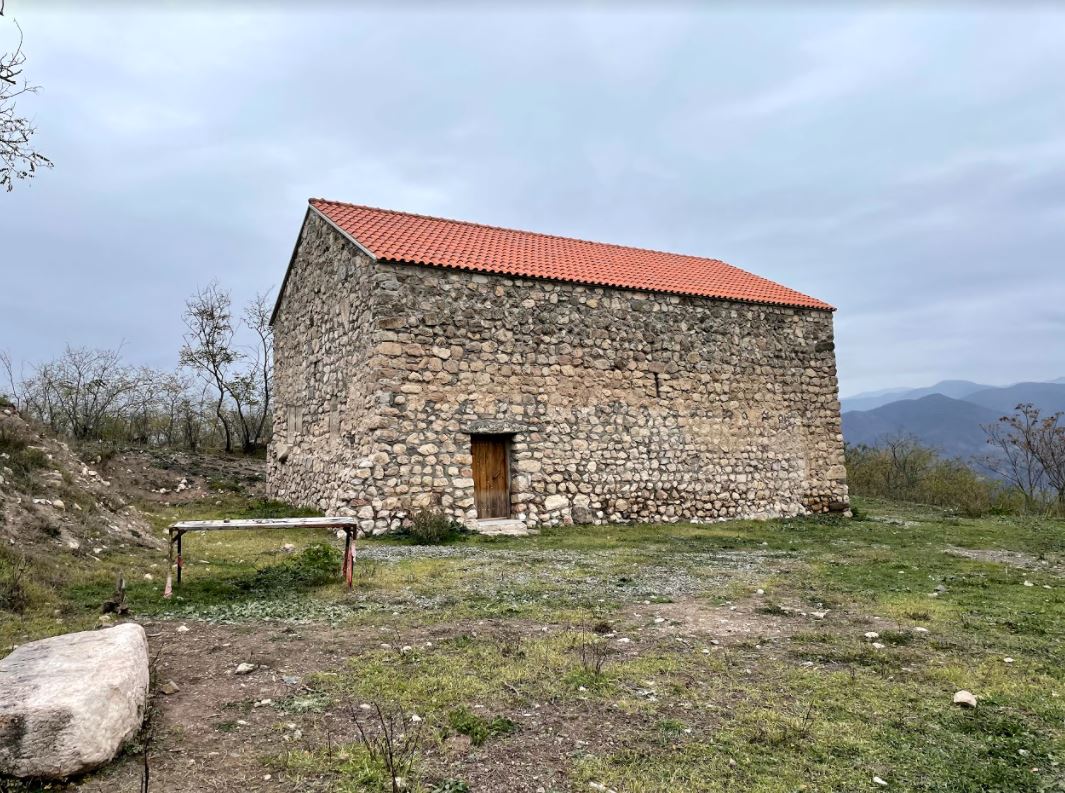
During my travels to northern Kashatagh, I was able to visit multiple villages, churches and other historic sites. My journey began in the village of Hochants after passing a heavily damaged bridge upon entering Artsakh. Hochants is home to the 17th century St. Stepanos Armenian Church that was reopened and reconsecrated in 2019 through the efforts of Artsakh’s Ministry of Culture, Youth and Tourism, the Armenian Apostolic Church and the Tufenkian Foundation. It was the key to this church that I had to take back to Goris and Rev. Fr. Aharon Melkumyan.
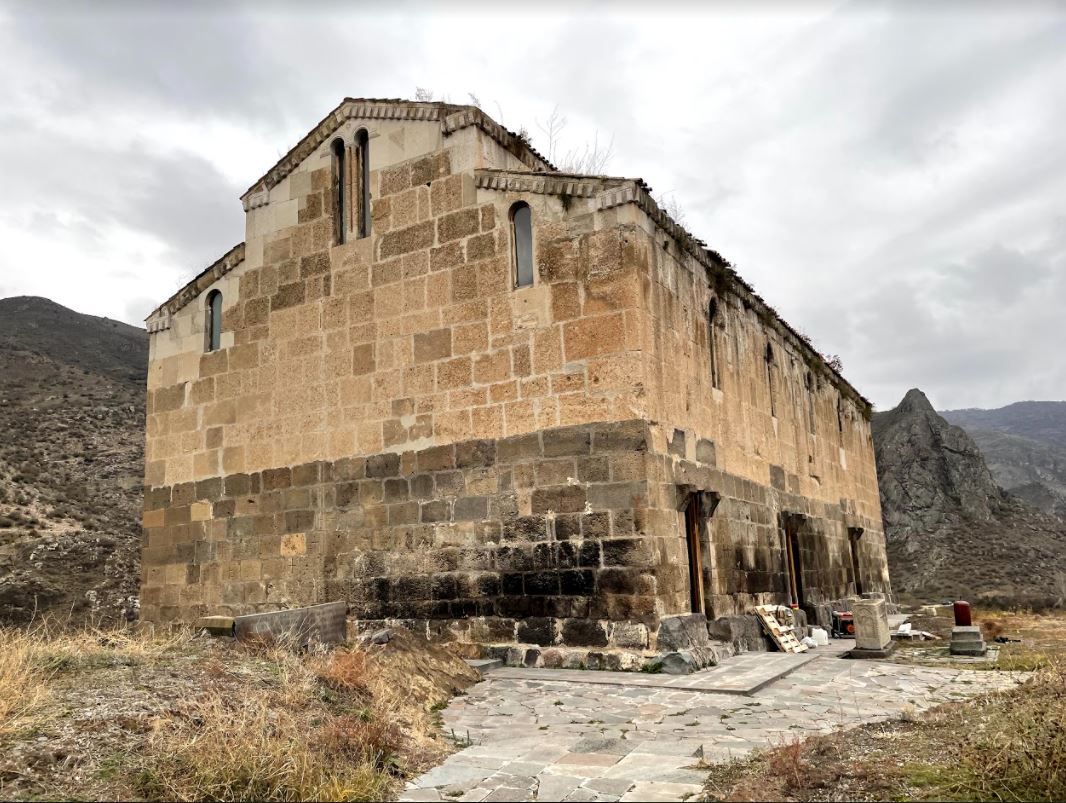
I also visited Tsitsernavank, a fifth to sixth century monastery that’s five kilometers from the border of Armenia’s Syunik province. The basilica of Tsitsernavank was believed to contain relics of St. George the Dragon-Slayer. Tsitsernavank’s church of St. George was reconsecrated and renovated in October 2001.
The villages were already emptied at this point; most houses had been abandoned. Again, I witnessed Armenians dismantling their homes and cutting trees to take with them to Armenia. But this time, the presence of Russian troops was heavy. They were using what was the checkpoint for the Artsakh Republic, and their convoys and military vehicles were also stationed at different locations along the road.
On day two, I traveled north of the village of Hak and made an attempt to stop at as many churches and historic sites as I could on the way back south to the main road. Hak is home to the 17th century Armenian church of St. Minas, located in the center of the village in northwest Kashatagh. It was restored in 2009 by the Tufenkian Foundation. There was not a soul in sight in Hak; the village was empty.
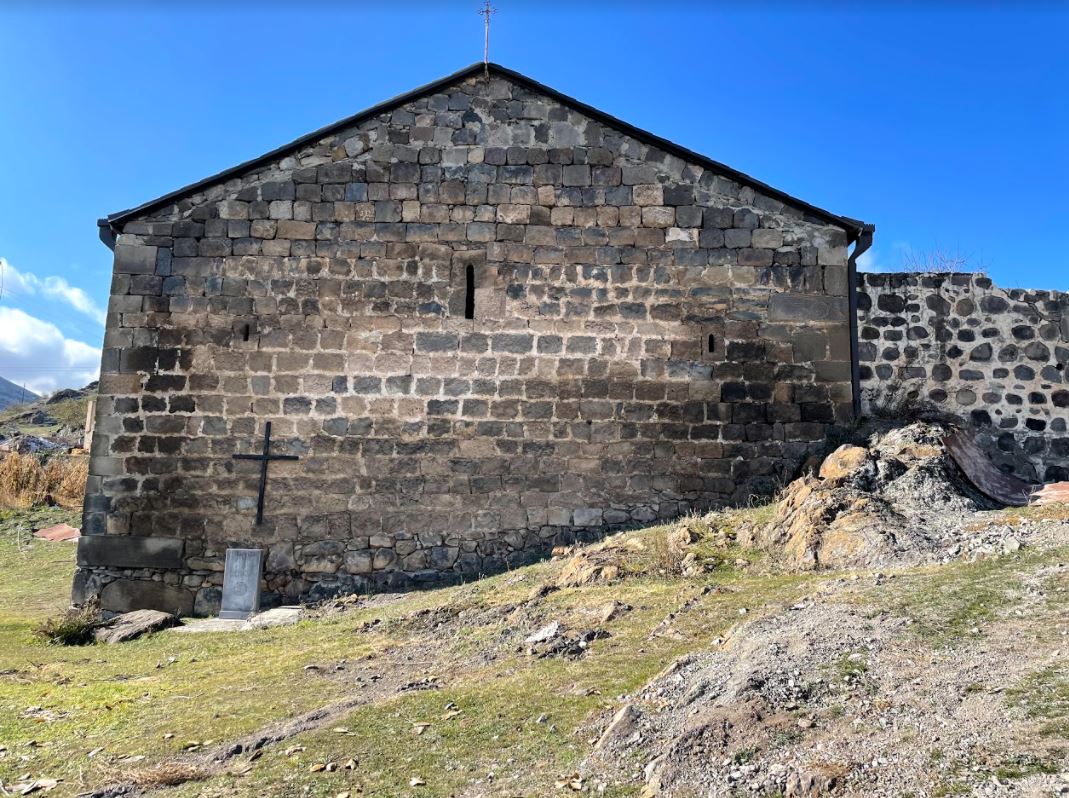
We also visited Mirik, Herik, Pertik and Mashatagh—also all cleared out. I only noticed construction workers taking apart certain structures. These villages are fairly remote and require a dirt road to get there. Mirik and Herik specifically are deep in the hills of Kashatagh where one can overlook mountain after mountain and valley after valley in the region of Kashatagh. Church after church and village after village, it kept becoming even more excruciating to face the concession of these territories, which was only taking place a few days following my visit. During my visit, groups from TUMO and the Tufenkian Foundation were also traveling across all the regions that were being transferred to Azerbaijan in order to 3D-scan the churches at risk.
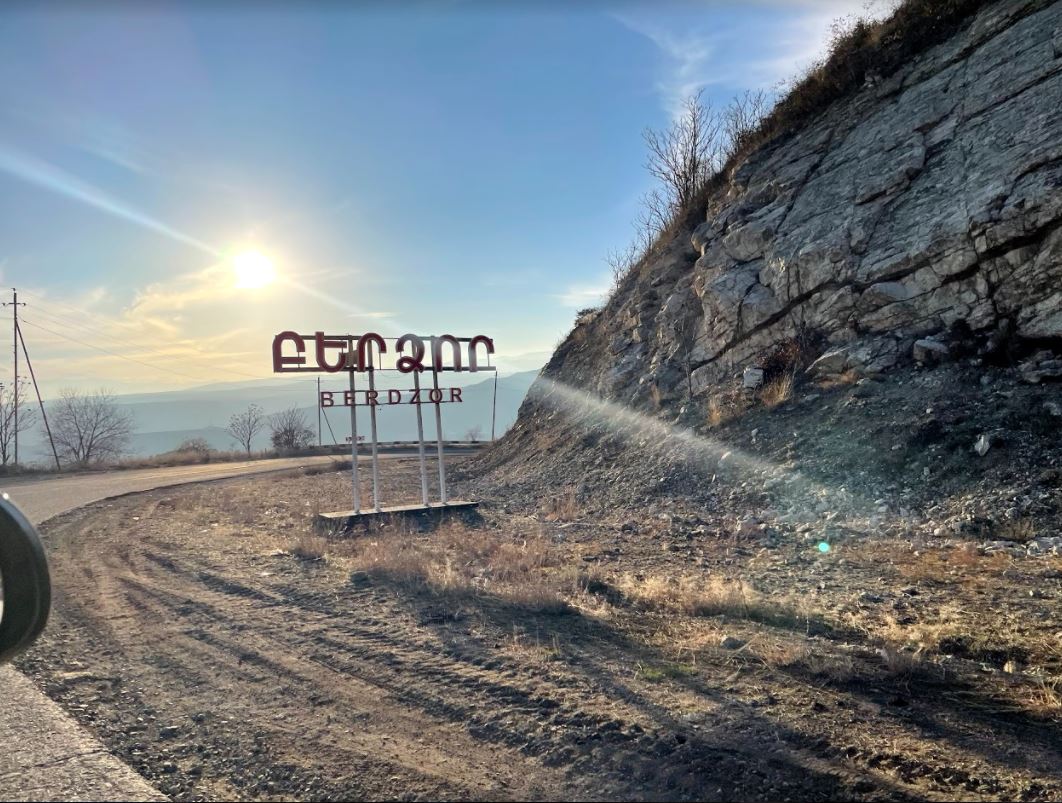
On day three, I made the trek to Stepanakert. As I traveled through Berdzor where the situation still seemed uncertain following the agreement, it was evident that not everyone had returned, and the town had not returned to a sense of normalcy. When I was there in the final days of November, news about which parts of Berdzor and Kashatagh were to remain under Armenian control was very mixed. Some outlets had been reporting that residents were being forced to leave when they were initially told to stay. However, on December 1, Berdzor mayor Narek Aleksyanyan stated that many residents of Berdzor are still there. He added that Russian peacekeepers instructed them to lower the flag because no flags from either side would be allowed to be raised. Russian peacekeepers are currently stationed in Berdzor.
On the way to Stepanakert, there were multiple Russian checkpoints with their flags raised everywhere. As we approached the entrance to Shushi, we were faced with the painful sight of Turkish and Azerbaijani flags around the sign of Susa. I had previously seen troubling and disheartening pictures of Azeri flags around or at the entrance of Shushi. That day, I saw it with my own two eyes, and I wouldn’t wish that traumatic sight upon any Armenian because Shushi was always home to us. As young diasporans, we volunteered our summers there, built relationships and contributed to its development. Our absence in Shushi was painful to witness.
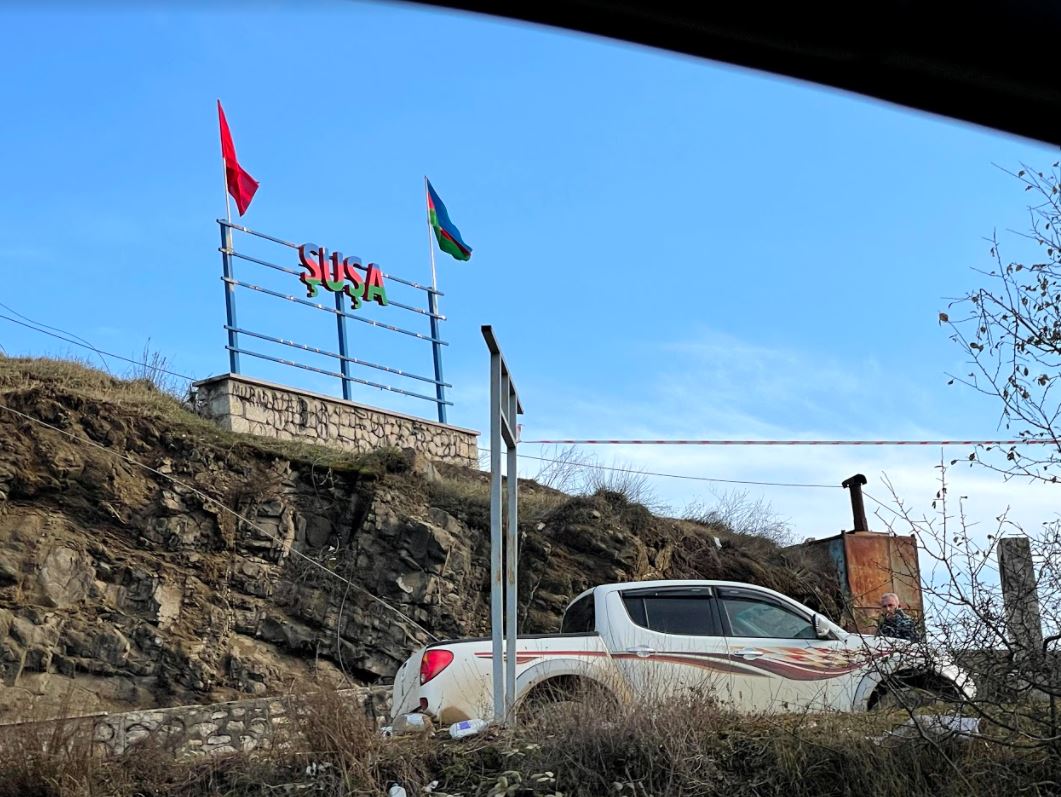
As I entered Stepanakert, surprisingly there was some type of liveliness; it was clear a great deal of families had returned. Residents were walking around town. Many markets and stores were operating. Internet, electricity and utilities were mostly available. But as I drove through the city, I found heavily damaged pockets affected by the shelling and attacks as reported by the Armenian government; repairs were already evident in many of these areas.
I visited the market where approximately half the vendors were present, selling fruits, honey, mulberry vodka, jingalov bread, among other items. The main market had surely been hit hard and was still undergoing repairs. Based on my visit and exchanges with several locals, Stepanakert had become home for many displaced families from Hadrut.

Outside city hall in Stepanakert, there was a long line of people waiting to receive nutrition from the government. The International Red Cross had provided boxes of food and these boxes were being divided among families in Artsakh. In Stepanakert’s Renaissance Square, I also witnessed a demonstration organized by the families of the missing soldiers.
The electricity network building in Stepanakert, the maternity hospital, the Armenian Relief Society’s Sose Kindergarten and homes throughout the city had also been damaged. The kindergarten had been hit by shrapnel pieces.

Though the city was attempting to reach normalcy, the mood overall was quite somber and people seemed confused…confused about what their future holds and unsure of the new developments that may or may not even take place regarding the deal that was made on November 9.

A sinking feeling came over me as I passed the welcome sign at the border that read “A Free and Independent Artsakh Welcomes You.” Those who wish to enter Artsakh now are welcomed by Russian peacekeepers as an Azerbaijan-controlled Shushi overlooks Stepanakert, and for the time being, there exists only one Armenian-controlled road that takes you to Artsakh from Armenia (the Lachin Corridor since Karvachar was transferred to Azerbaijan). It certainly didn’t feel “free and independent” to me.


Thank you Dickran Khodanian Yes it was painful to read ,but i did finish reading .my love for Artsakh will stay with mealways.
Thank you Dickran for taking us on your final journey. Poignant but necessary.
Very sad. The losing Pashinyan leadership needs to go at all cost. Only solution now is to steadily rebuild, rearm and have real leadership that is prepared to retake our historical lands.
i am at a loss as to how and why we could not decimate and destroy every turk otto azeri anywhere near us shooting rockets or anything at us- we had the power and supplies- how and why we did not take 1000 of them dirt bags out for any one of our Armenians they hurt let along killed- we will get them but not soon enough- they are coward and live in loutrines- they all like turks occupy ourlands and rape and kill women and children- it is in their blood and we must destroy these rabid skunks
Thank you dickran Jan, for sharing. The fight is far from over.